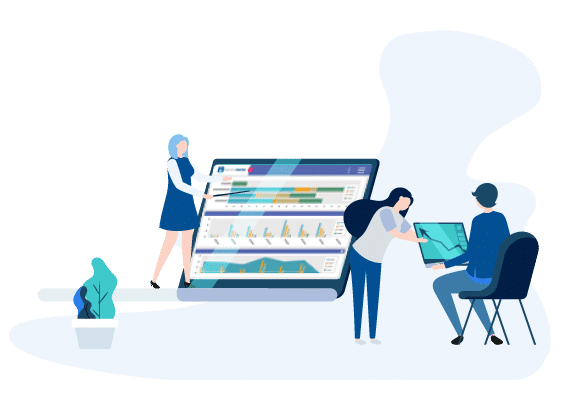
Understanding The Role and The Significance of The Service Desk Provider
Last updated on June 23rd, 2022 at 04:23 am
Service desk providers depend on different IT service management (ITSM) tools to attain their work objectives. Latest service desks are very flexible and proactive and can reply to various operational conditions. They are extremely process-oriented and intent to talk about everything within the company’s Information technology guidelines and policies.
Differentiating Between Help Desk and Service Desk
While service desk and help desk functionalities may look similar, there are a few important differences between the two.
A help desk offers technical support to the customers, troubleshoots user and customer problems, and directs them via particular actions and tasks.
A service desk views business requirements instead of concentrating on talking about user requirements and takes the wider business context into account. It concentrates on enhancing the performance and efficiency of IT experts, meeting service-level arrangements and determining the approach IT experts deliver to both internal to customers and employees.
In the majority of the companies, the help desk is a constituent of the service desk, and is apprehensive just with customer problems, user satisfaction and requests.
The Responsibilities of A Service Desk Provider
Service Desk Providers Have Different Responsibilities like:
- Handling service incidents, problems and requests
Some examples of a service desk screen include:
- Talking about IT concerns of all departments in the company
- Tracing customer problems
- Allowing employee onboarding
- Observing metrics and reports such as:
First-call Resolution Rate (FCR) – The percentage of tickets determined with your initial response. FCR shows how quickly and effectively your service desk functions. This is significant because it assists to enhance end-user productivity.
Cost per Contact– The total cost of working with a service desk with respect to the quantity of tickets and calls undertaken in a specific period. It is a technique of how productively a service desk means its business.
Ticket/Incident Volume– Tracing the quantity of tickets coming into service desk offers a synopsis of high activity times can be a pointer of staffing scheduling and requirements.
Repeated Tickets– Organisations can trace mean time to detect (MTTD) and Mean Time to resolve (MTTR) for recurrent tickets. A declining trend for these metrics designates how efficient the service desk is in learning from previous issues.
Ticket Trending– Tracing trending information with regards to the quantity of tickets for a specific problem over a particular period can determine the requirement for extra automation to resolve or prevent that issue.
Ticket Backlog –Tracing ticket backlogs and working to enhance efficiency assists to overlook high support time and admin staffing business costs.
Modern service desks also have advanced capabilities like:
- Automating and tracing calculation and imposing employee time allocations on service requests. This allows the tracing of employees’ documents and productivity incidents that demonstrate to be extremely time-consuming.
- Automating escalations and remediation with regulations and rules based processes. This permits for key characteristics identification of reported routing and incidents to the proper pool of technicians.
A service desk is integrated with other IT management tools, and assists to offer flawless executions of IT operations in a company.
Professional Services Automation (PSA) and Service Desk
Majority of the managed service providers incorporate professional service automation tools to execute their businesses effectively. A PSA tools is a software solution that offers a function suite such as customer relationship management (CRM), finance and billing, project management and service desk. The main function of a PSA tool is the service desk. This is the point where all customers’ IT requests and problems are managed. For quoting, the billing and MSPs and CRM functions are significant.
The PSA Tools Enables MSPs To:
- Develop, manage and solve service tickets for customer companies
- Automate technical time tracking and organise expense reports
- Professionally organise and streamline customer IT projects
- Raise their relations with consumers and prospects by keeping account track and latest profit opportunities
- Automatically develop invoices and manage billing
Read Dive is a leading technology blog focusing on different domains like Blockchain, AI, Chatbot, Fintech, Health Tech, Software Development and Testing. For guest blogging, please feel free to contact at readdive@gmail.com.
